Sodium hydroxide
Sodium hydroxide, also known as lye and caustic soda, is an inorganic compound with the formula NaOH. It is a white solid ionic compound consisting of sodium cations Na+ and hydroxide anions OH−.
Sodium hydroxide is a highly corrosive base and alkali that decomposes lipids and proteins at ambient temperatures and may cause severe chemical burns. It is highly soluble in water, and readily absorbs moisture and carbon dioxide from the air. It forms a series of hydrates NaOH·nH2O. The monohydrate NaOH·H2O crystallizes from water solutions between 12.3 and 61.8 °C. The commercially available “sodium hydroxide” is often this monohydrate, and published data may refer to it instead of the anhydrous compound.
As one of the simplest hydroxides, sodium hydroxide is frequently used alongside neutral water and acidic hydrochloric acid to demonstrate the pH scale to chemistry students.
Sodium hydroxide is used in many industries: in the making of wood pulp and paper, textiles, drinking water, soaps and detergents, and as a drain cleaner. Worldwide production in 2022 was approximately 83 million tons.
Enquiry Form
Product Info
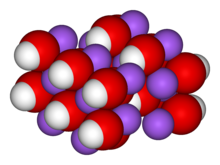 |
|
 |
|
| Names | |
|---|---|
| IUPAC name
Sodium hydroxide
|
|
Other names
|
|
| Identifiers | |
|
3D model (JSmol)
|
|
| ChEBI | |
| ChemSpider | |
| ECHA InfoCard | 100.013.805 |
| EC Number |
|
| E number | E524 (acidity regulators, …) |
| 68430 | |
| KEGG | |
| MeSH | Sodium+Hydroxide |
|
PubChem CID
|
|
| RTECS number |
|
| UNII | |
| UN number | 1823 (solid) 1824 (solution) |
|
CompTox Dashboard (EPA)
|
|
| Properties | |
| NaOH | |
| Molar mass | 39.9971 g/mol |
| Appearance | White, opaque crystals |
| Odor | odorless |
| Density | 2.13 g/cm3 |
| Melting point | 323 °C (613 °F; 596 K) |
| Boiling point | 1,388 °C (2,530 °F; 1,661 K) |
| 418 g/L (0 °C) 1000 g/L (25 °C) 3370 g/L (100 °C) |
|
| Solubility | soluble in glycerol, negligible in ammonia, insoluble in ether, slowly soluble in propylene glycol |
| Solubility in methanol | 238 g/L |
| Solubility in ethanol | 139 g/L |
| Vapor pressure | <2.4 kPa (20 °C) 0.1 kPa (700 °C) |
| Acidity (pKa) | 13.9 (Na+) |
| Basicity (pKb) | 0.0 (OH−) |
| −15.8·10−6 cm3/mol (aq.) | |
|
Refractive index (nD)
|
1.3576 |
| Structure | |
| Orthorhombic, oS8 | |
| Cmcm, No. 63 | |
|
a = 0.34013 nm, b = 1.1378 nm, c = 0.33984 nm
|
|
|
Formula units (Z)
|
4 |
| Thermochemistry | |
|
Heat capacity (C)
|
59.5 J/(mol·K) |
|
Std molar
entropy (S⦵298) |
64.4 J/(mol·K) |
|
Std enthalpy of
formation (ΔfH⦵298) |
−425.8 kJ/mol |
|
Gibbs free energy (ΔfG⦵)
|
−379.7 kJ/mol |
| Hazards | |
| GHS labelling: | |
  |
|
| Danger | |
| H290, H302, H314 | |
| P280, P305+P351+P338, P310 | |
| NFPA 704 (fire diamond) | |
| Lethal dose or concentration (LD, LC): | |
|
LD50 (median dose)
|
40 mg/kg (mouse, intraperitoneal) 140 – 340 mg/kg (rat, oral) 1350 mg/kg (rabbit, dermal) |
|
LDLo (lowest published)
|
500 mg/kg (rabbit, oral) |
| NIOSH (US health exposure limits): | |
|
PEL (Permissible)
|
TWA 2 mg/m3 |
|
REL (Recommended)
|
C 2 mg/m3 |
|
IDLH (Immediate danger)
|
10 mg/m3 |
| Safety data sheet (SDS) | External SDS |
| Related compounds | |
|
Other anions
|
|
|
Other cations
|
|
|
Related compounds
|
|

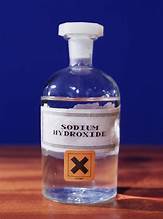

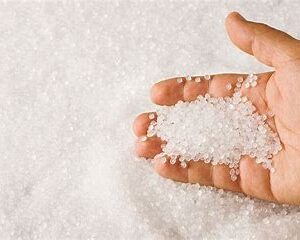
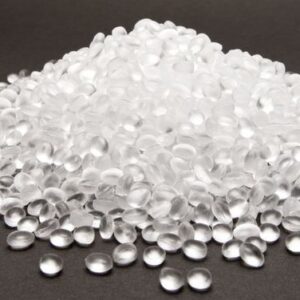
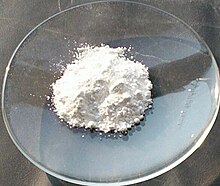
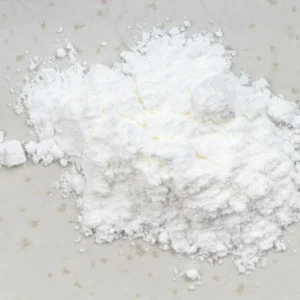
Reviews